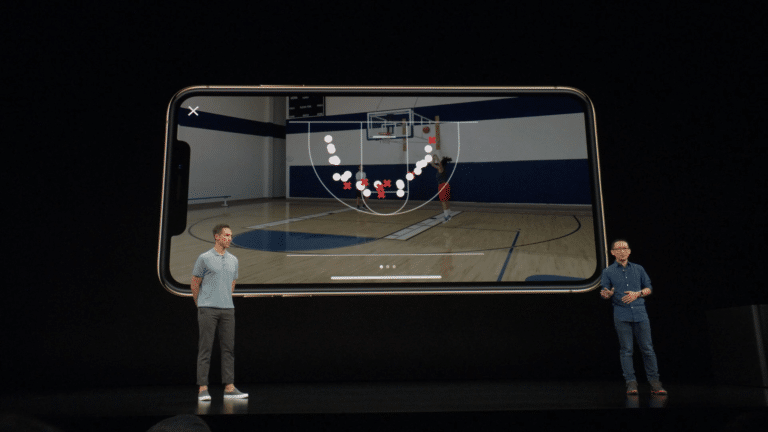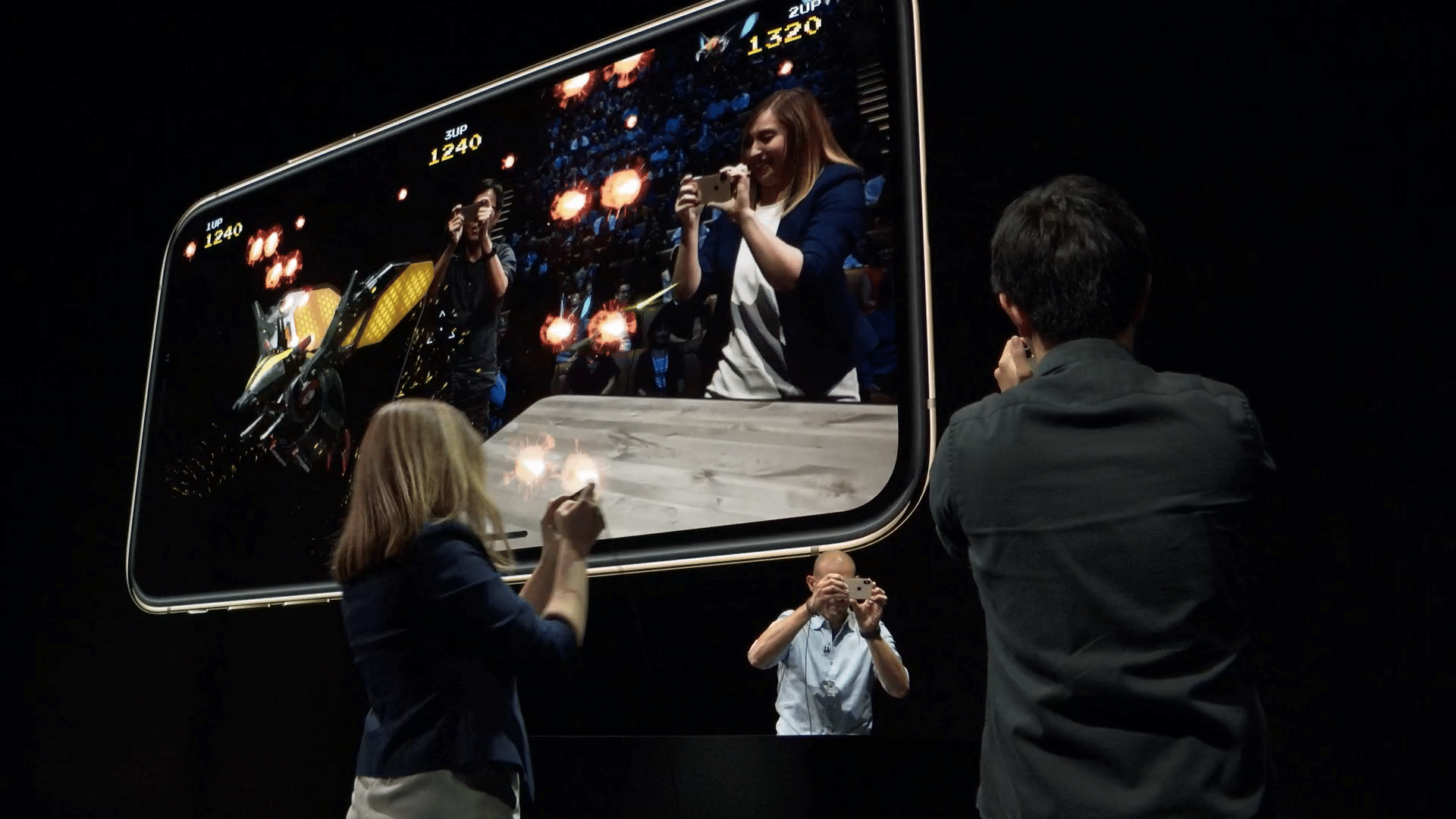
XR Talks is a weekly series that features the best presentations and educational videos from the XR universe. It includes embedded video, as well as narrative analysis and top takeaways. Speakers’ opinions are their own.
At Apple’s fall hardware event this week, AR was underplayed compared to its past few events (including WWDC). But that doesn’t mean Apple has abandoned AR. In fact, evidence and acquisitions have accelerated about it’s continued work on AR glasses for a circa 2020 launch.
Back to this week’s event, the always-glorified keynote positioned AR as more of a supporting part to other spotlighted products. For example, given its graphical processing needs, AR was used a few times to flex the muscles of the iPhone’s new A12 bionic chip and four-core GPUs.
“With the additional GPU core, we’re able to render scenes like the stun effect,” said Directive Games’ Atli Mar Sveinsson about the AR Galaga game we profiled yesterday. “With new features of ARkit and the power of the new iPhone, we’re able to craft experiences at much higher fidelity.”

The second AR app demo’d was Home Court, a basketball training tool that tracks shooters using the depth camera. It renders each spot on the court they shot from, and six metrics including shot style, arc and release height. This is meant to train players through an immediate feedback loop.
“To become a great shooter, you need to practice every day. You need to shoot at game speed and with the right posture,” said eight-time NBA all star Steve Nash. “Home Court is giving players immediate feedback… these meaningful insights and feedback just weren’t possible before.”
Lastly, the most potentially impactful AR feature was downplayed: Quick Look. First shown at June’s WWDC, it will let users make products they see on the web come to life in their immediate surroundings (think: furniture). Its coming in iOS 12 and utilizes the new USDZ file format.
“The camera viewfinder has turned into a wonderful window to AR experiences,” said iPhone marketing lead, Kaiann Drance. “The A12 Bionic chip and GPU helps render realistic graphics… and AR Quick Look lets you look at 3d objects in Safari and bring them into the real World.”

Back to AR’s positioning, though it didn’t hit us over the head like the past few Apple keynotes, its importance was apparent, albeit subtle, to trained eyes. For example, Super Ventures partner and industry luminary Ori Inbar sees lots of promise in Wednesday’s AR treatment.
Or as he wrote in an emailed statement to ARtillry…
At first glance it might appear that Apple had no flashy augmented reality (AR) news today—but I beg to differ, The A12 Bionic and Core ML 2 upgrades they shared, with improved camera, more efficient and effective chip technology and enhanced developer tools—when combined were a huge announcement for AR. These are tools that will accelerate AR development and consumption to new levels.
And if you merge today’s core tech updates with the game-changing QuickLook announcement (revealed at WWDC in June) which gives consumers the ability to experience AR in Safari WITHOUT the need to download an app—today is historic. QuickLook makes AR (1) much more accessible for online shoppers (just click a link) and (2) super valuable for retailers as it is proven to deliver much higher conversion rates and reduced number returns. QuickLook will also provide user volume.”
So although it may seem like baby steps, Apple today moved the needle on consumer AR adoption much further than I believe they will get immediate credit for.”
See the full keynote below, with the AR segments above starting at the 54 minute mark:
For deeper XR data and intelligence, join ARtillry PRO and subscribe to the free ARtillry Weekly newsletter.
Disclosure: ARtillry has no financial stake in the companies mentioned in this post, nor received payment for its production. Disclosure and ethics policy can be seen here.
Header image credit: Apple
